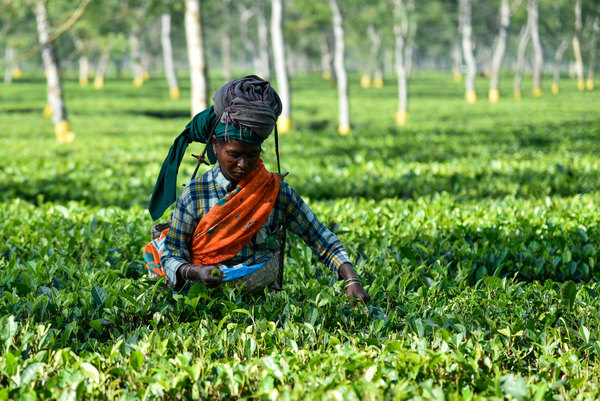Schmallenberg – the impact of the virus hitting UK farms
Schmallenberg virus was first reported in in cattle the summer of 2011 near the town in Northern Germany that gives it its name. Since then, the spread of the virus has been rapid. In the UK, it was first reported on 11 farms in January 2012, and has grown month-on-month since then. It is spread…
Chocolate Made in South Africa for homesick Brits?
This blog is about the weirdness of global trade… and the lengths (literally) we go for chocolate. The wrapper on my Marks & Spencer (M&S) valentine chocolates read: “Made with our exclusive British Milk chocolate recipe, Made in South Africa”. Incredibly, it seemed that a firm in South Africa (SA) was targeting local people with…
How alien species cost Europe €12bn a year
A report from the European Environment Agency (EEA) sets out the staggering cost of alien species – animals and plants brought to Europe from other parts of the world. The cost, and the threat to health and the environment, is said to be greater than expected, costing at least €12bn (£10bn) a year. More than…
Measuring up? Analysing aid and international development at OxFID 2013
By Daniel O'Hara Return On Investment. To many that phrase brings to mind the corporate sector, with its insistence on low costs and high profits. Far fewer people would think of ROI in relation to international development – its focus on getting the best value for money perhaps seems at odds with development’s aims of…
Urban agriculture – why is it important?
Today is the second day of the Urban Agriculture Summit 2013 ’Transformative solutions on how we feed people in the urban era’ currently being held in Linköping, Sweden (29-31 January). So why this specific gathering on urban agriculture? A recent UN report estimated that the Earth’s population will increase by 40% and exceed 9 billion people…
A sweeter future for bee farmers
Whilst tuning into the BBC’s Great Comic Relief Bakeoff last week I was interested to hear about TREE AID and their honey project in Ghana. TREE AID supports villagers to produce and market honey so that they can generate income to provide their families. The villagers are encouraged to farm bees during the dry months…
Banned chemicals and silent springs
Recently I have been removing an array of chemicals, from alpha-hexachlorocyclohexane to zeta-cypermethrin, from CABI’s compendia (Crop Protection Compendium, Forestry Compendium and Invasive Species Compendium) records, as these chemicals have either been banned or severely restricted in their use. This work was sponsored by Plant Protection Station, Ministry of Agriculture, Forestry and Fisheries, Japan.
The seed of its own destruction? Seedborne diseases and the seed trade
In 1989, farmers in Florida, Indiana and South Carolina began noticing a disease that was rapidly spreading through their watermelon crops1. Large, dark lesions and bruises appeared on the fruit and leaves exhibited brown discolouration; all that remained of severely infected fruit was a pulpy, inedible mess. In damp conditions the disease proliferated quickly and…
A new Food Tank for 2013
At the start of this new year (as at the start of many previous years), I am making the resolutions of improving my diet and getting fitter with the aim of ending 2013 healthier than my current state! From this personal level, I was interested to read about the launch of Food Tank: The Food…
7,500 Years of Cheese Making in Europe
M Djuric, Dairy Science Editor Compelling evidence of cheese-making has been uncovered in prehistoric pottery sieves found in the Kuyavia region in Poland by researchers from Great Britain, Poland and the United States. The study has just been published online in Nature journal on 12 December 2012. An abundance of milk fats was detected in these specialized…



